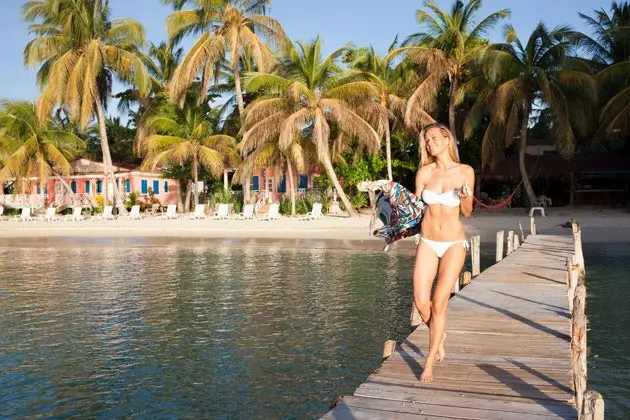
Haiti, paradise is reborn
The reaction is usually the same: “Wow, Tahiti, lucky you!” “No, no, Haiti with an H”. The truth is that if Haiti were not Haiti, it would remind us of Polynesia for something more than a mere phonetic similarity. It's got every blue you can name contained in a warm sea in which to gloat for hours, islands where you can play Robinson Crusoe , waterfalls, secret caves, mangoes that taste like mangoes... Oh, if Haiti weren't Haiti, everything indicates that its coast would long ago be lined with umbrellas and bungalows with swimming pools. But Haiti is Haiti, the Cinderella of the Caribbean, a country where two plus two does not always equal four, a land historically abused by human greed and the forces of nature, and this beautiful postcard beach has been mine all afternoon.
My beach is about two hundred meters long and the sand is almost white. It occupies a horseshoe-shaped bay in Ile-à-Vache , a fishing island barely 13 kilometers long, off the south coast of the country. At one end of the beach it is camouflaged between the palm trees a charming boutique resort of pink houses and a small jetty . The Abaka Bay Resort is the more sophisticated of the two accommodations on this small, virtually unspoiled island. For now: there are plans to make it the next Turks and Caicos , in an eco-luxury destination.
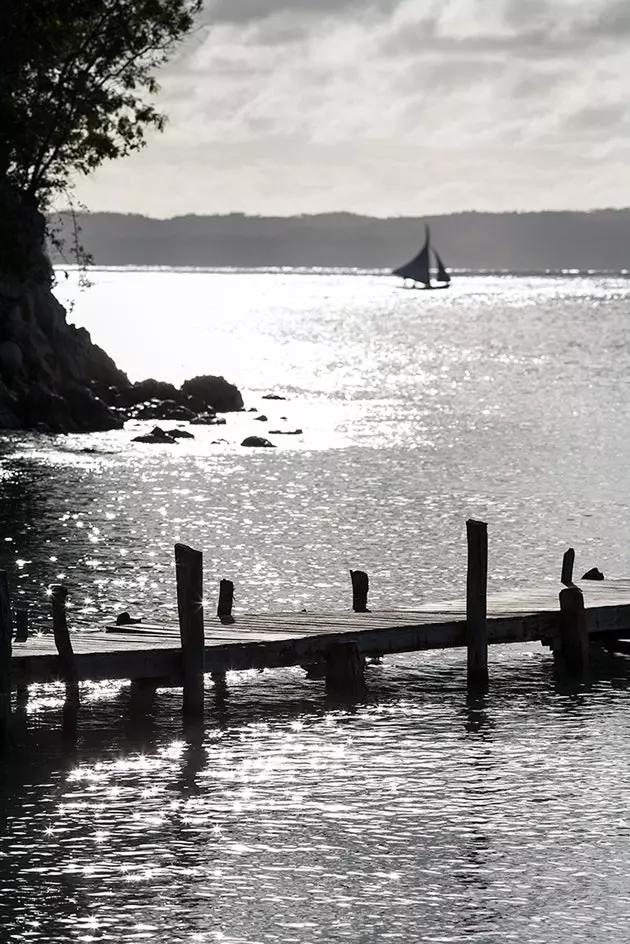
Sunset over Abaka Bay
Just a few months ago, CNN World highlighted Abaka Bay as one of the “one hundred most beautiful beaches in the world”, specifically in position 57 . In that same list they could also have included several of the other twenty beaches of Île-à-Vache. It's just a sample that Haiti has entered squarely on the radar of the tourism industry . Confirmation is our presence: Condé Nast Traveler doing the cover story with Petra Nemcova , a supermodel (one of the twelve beauties of the 2013 Pirelli calendar) who insists that the photographer move the shot away —“Are the mountains in the background?”— to show the landscapes of the country that, for a year, has chosen as the official home.
15 minutes by boat from Abaka Bay there is a small sandy area that appears between the emerald reflection of the waves, a tiny islet of sand at the whim of the tides . It's easy to miss it. they call it Lover's Island , the island of lovers, although it does not offer a single bush behind which to hide from prying eyes. Until here usually only pelicans arrive . Lying on this point of sand I think of the castaways who have found salvation on this islet. I am aware that the placidity that the sea now shows is deceptive and that it hides a tumultuous past.
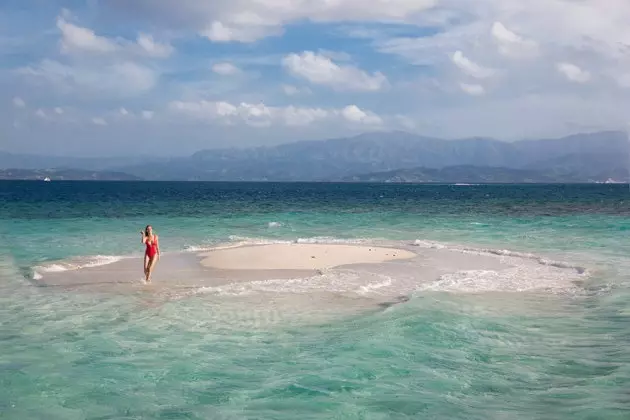
Lover's Island, can't fit more than two (close together)
In the area there are more than 200 shipwrecks . Galleons, schooners, sailboats... Many of them sunk by the cannons of the ruthless corsair Henry Morgan . In the 17th century, just before the Spanish crown definitively lost its interest in Haiti and France took control of it, turning it into the most prosperous colony in its history, the western coast of Hispaniola (an island it shares with the Dominican Republic) was a nest of pirates and freebooters of all conditions.
The coves of its rugged coastline were the perfect hiding place from which to dedicate themselves to harassing anyone who dared to approach and plundering valuable loot. Morgan and his henchmen chose Île-à-Vache for their misdeeds . The remains of his flagship, the HMS Oxford , aboard which she died in 1669, rest on the seabed, under multicolored reefs and giant sponges. In these depths there is such a quantity of wrecks that UNESCO is already making an inventory and there is a plan to relocate some pieces found over time to create an underwater museum in a more accessible area.
I would spend my life contemplating this sea. The water is warm and the waves, today, anecdotal . How many times have we dreamed of running away to a place like this? But Haiti is, for the moment, a paradise exclusively for very adventurous spirits and millionaires , and on flights to Port-au-Prince, its capital, there are more NGO workers and solidarity travelers than honeymooners. In first class, though, it's almost as easy to bump into a celebrity as it is in the Hamptons. Hollywood stars, models, designers, producers, businessmen, politicians... the really rich and powerful arrive by private jet. After all, New York is only four hours away. Miami, two. Many of them have helped build roads and hospitals. Others work with local artists. Most lend their image to raise funds for social projects. And everyone, before, after or during, has irremediably fallen in love with Haiti.
Petra Nemcova arrived in Haiti for the first time in November 2007. It was the beginning of Happy Hearts , the foundation that the model created to help rebuild the lives of children affected by natural disasters after recovering, herself, from her own tragedy in the 2004 Thailand tsunami. Today Happy Hearts has a kindergarten and two schools in the most marginal areas of Port-au-Prince, and another 81 schools in seven different countries. “I have 45,000 children!” Petra often jokes. Her affinity with the country is such that she proudly works as a goodwill ambassador. Is that why she moved to Haiti? "Because of that and because I realized that the moment she landed here, no matter how exhausted she was, she filled me with energy, vitality and contagious joy." Her smile when telling it is too.
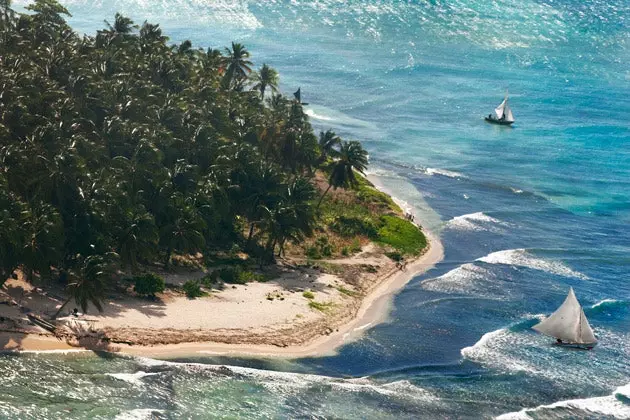
Fisherman's island near Île-à-Vache, whose seabeds are full of wrecks and coral
To the tune of J Perry's 'We're gonna make it', we sprayed ourselves with anti-mosquito spray from our feet (especially our feet) to the crown of our heads. It is the price to pay for dining under the moonlight. "It's funny, almost all Haitian songs talk about the country as if it were his girlfriend : Haiti dear, you and me together forever”, observes Petra. "How many songs do you know that declare her love for Spain like this?" As she explains to me, all Haitian singers have some lyrics in which they address the president or in which they fantasize about what they would do if they took office. "And now it turns out that the president is a famous singer."
Michael Joseph MartellySweet Micky , a konpa music celebrity, independent candidate. He got 67 percent of the vote and came to power a year and a half after the earthquake. “Together we will change Haiti!” , has been the most chanted chorus of his since then. The charismatic figure of Martelly, apart from rhythm, radiates illusion, confidence. "Kidnappings have practically come to an end, and corrupt people that no one had dared to touch before are being persecuted," Petra enumerates. "Kilometers of roads have been built, public lighting with solar panels and, this year, more than a million children will go to school for free."
Education, energy, the environment, job creation, and the development of infrastructure and industry These are the priorities of a Government that sees in tourism the key factor that attracts the investments that will make all of the above possible. “Haiti is open for business” , emphasizes Matterly every time he gets a chance. From the Ministry of Tourism, the first step has been a campaign to change the image of the country. The message from her Twitter and her Facebook page is clear: "Haiti is magical, experience it!" “We are aware of all the work that needs to be done”, the tourism minister would explain to me, stephanie villedrouin , days later in Cote des Arcadins , the closest seaside resort to the capital. “One of the main concerns we have is that Haiti has always been seen as a poor place that must be helped, that must be shaken. But if you want to help Haiti, come and consume and value what we have. That is a more direct impact.”
The minister has had a heart attack year, negotiating with airlines and hotel chains, designing itineraries. She is happy. She has just signed an agreement with Frank Ranieri, president of the Punta Cana Group, for the joint development of a virgin beach of 26 kilometers in Côtes-de-Fer, in the south, halfway between the cities of Jacmel and the Keys , where they plan to build a thousand rooms, a golf course and an airport. "Each new hotel room generates two direct jobs and four indirect ones," estimates Minister Villedrouin.
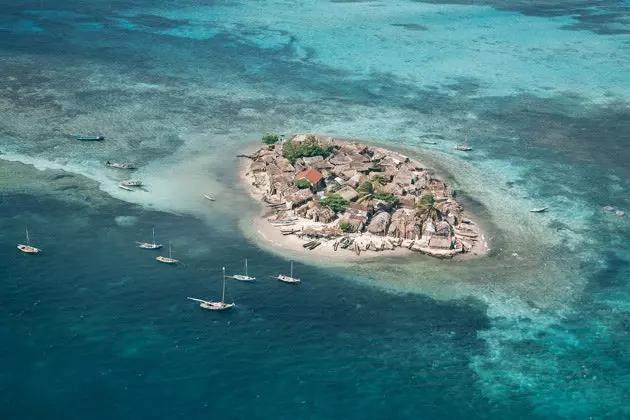
Fishing community in Île-à-Vache
To the formula of 'sun and beach' of the Caribbean, Haiti comes to add something else: a cultural experience . “Remember that Haiti is the only country born from a slave rebellion,” Villedrouin points out to me. “ We have impressive fortresses, Taino remains and even the underground city of Limbe . Only in the north can you experience the 500 years of history since Columbus landed here." Haiti also has mountains. “ It is very important that we involve rural areas in tourism development . Thus, the traveler will be able to sleep on the beach and, the next day, in a cabin in the mountains. And, more importantly, the inhabitants of the interior will not be forced to mobilize to look for work”.
For Île-à-Vache the ministry's plans are even more exquisite: a low-density development in which agricultural conservation and development will be the keywords. There will be no cars on the island, but golf carts, villas and bungalows instead of big hotels, and it will be built an organic farm to be managed by the inhabitants of the island and in whose activities travelers can participate.
While the tourists arrive, in Prince Port , potential investors already have several upscale hotels to stay at. Last year they opened three hotels of large international chains and, this year, completion of all 175 rooms at the Marriott is expected. As an old Creole proverb says: “piti piti wazo fe nich li” (little by little, the bird builds its nest).
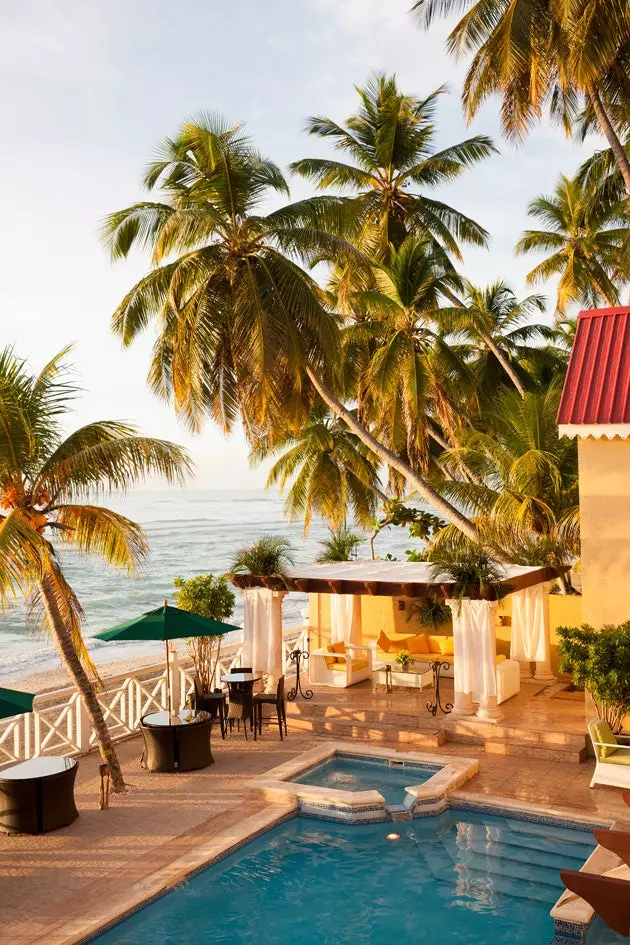
Villa Nicole, one of the new boutique hotels on the island
The idea of turning Haiti into the next Riviera Maya is not new . Back in the 1940s and 1950s, Haiti was the Pearl of the Caribbean for travel agencies. Graham Greene described it as a “tropical eden” and even travelers back from all over, like Truman Capote, found it "the most fascinating place." American cruise passengers strolled along Port-au-Prince's promenade, recently remodeled for the capital's bicentennial, and bought works of art and mahogany furniture at its Iron Market. At night there was music and voodoo shows. And the scene of Theater de Verdure received international stars.
Most of the tourist industry disappeared when Duvalier seized power in 1957. To the ruthless dictatorship of Papa Doc It was followed by that of his son, Baby Doc, in 1971. Although some travelers returned, nothing was ever the same: AIDS, political instability, cyclones, Aristide's bloody regime, more cyclones, the earthquake... .
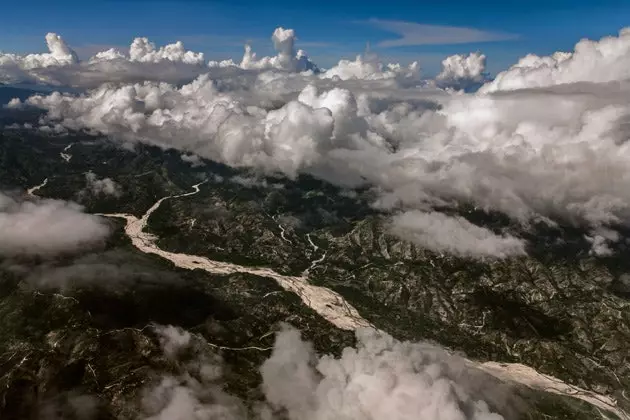
Haiti Panoramic
The history of the last 120 years of Haiti can be seen in every rusty curlicue of the Florita Hotel's wrought-iron balconies. The Florita is one of those hotels that define the place where they are. In this case, occupy one of the characteristic Creole houses that make Jacmel, considered the artistic heart of the country for the creativity and expertise of its artisans and artists, sits like a little new orleans . The Florita bar, with large sofas, fans and paintings covering all the holes in the walls, continues to be the meeting point for expats. It is a good place to talk, listen to truths, eat decently and drink the best rum of your life.
During the carnival, Jacmel is crazy comparable to Rio de Janeiro . The rest of the year is calm and very stimulating despite its decline. Perfect for walking and mixing in the daily routines: people who come and go, who buy and sell, who do nothing, who play dominoes, who invest in the lottery... The lottery stalls, which ironically called banks, they are ubiquitous wherever you look. In the market, even a stack of saucepans seems to me to be a delicate work of pop art. “Jacmel was the first city in the Caribbean to have electricity. It was also the first with a telephone” , the young Bayard Jean Bernard explains to me. Bayard occasionally works as a guide, but his thing is the cinema. He studies second year at Cine Institute , the professional (and free) academy that documentary filmmaker and producer David Belle founded nearly a decade ago to "shake the minds of tomorrow's youth" and "give Haiti a voice of its own to tell its story." Perhaps, in a few years, we will talk about Jacmel's 'Jollywood'.
“The other day Susan Sarandon came to give us a master class” , she tells me. Bayard knows everyone in town and our conversation is interrupted at every turn. It is the best company if you want to meet people and find the most interesting ateliers, like Charlotte Charles's, which makes original masks with gourds and coconut fiber, or the association where Jean-Paul Sylvaince sells his elegant vases made from leaves. tobacco. Donna Karan has included Jean-Paul's creations in the catalog of the Urban Zen collection, through which she promotes Haitian artists in exclusive markets.
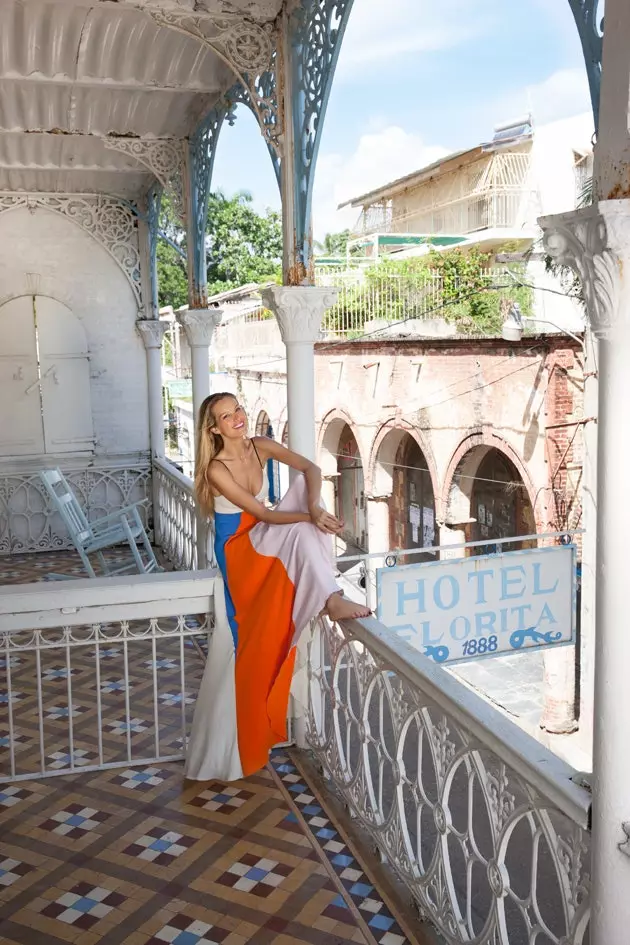
Florita Hotel
"But to begin to understand this country a little you have to know about King Christophe" Petra assures me. Henri Christophe, one of the four founding fathers of Haiti. He was born a slave and committed suicide becoming a king. He was a key figure in the uprising of the slaves that led to the independence of the country, in 1804 and governor of the northern territory when the newly released nation was fighting divided into two. His piece of the pie produced 60 percent of the world's sugar.
Among his heroics, Haitians take pride in the cunning with which he deceived Napoleon himself. They say that, preparing for the attack, Napoleon sent two spies to the field. Christophe's men barely reached a thousand, but the king, who knew the Frenchman's plans, had an idea: he would parade his entire army five times, in five different uniforms. The spies returned to Paris telling what they had seen and Napoleon never showed his nose in these parts. He is a good example of the ability of these people to take advantage of what they have and do a lot with little . Haiti knows how to do magic with garbage, masterful pieces with what others throw away.
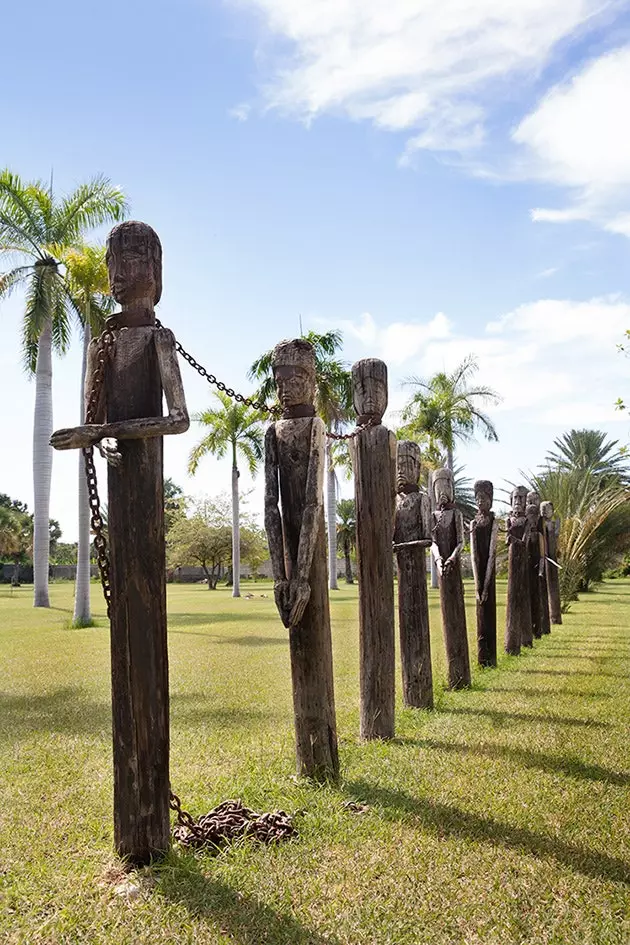
Tribute to the slaves at Moulin Sur Mer
To protect himself from the troops of the French and those of General Pétion, in command of the southern army, but also to show the world what Haiti was capable of, King Christophe had the six castles, eight palaces and the mammoth Citadelle Laferrière, a giant armored at 900 meters of altitude. From up here you can see the passage between the mountains, the port of Cap Haitien and even the coast of Cuba. It is the largest fortress in the Western Hemisphere.
They say that, during its construction, they mixed the lime with the blood of sacrificed animals so that the god Bondye and the loas, the voodoo spirits, would grant power and protection to the fortification. With several hundred cannons, walls four meters thick and 40 meters high, and enough resources for a 5,000-man garrison to survive for a year, the Citadelle was never used . These cannons (the largest collection of cannons from the 18th century known) are part of the newly released Artillery Museum, and by the end of 2014 the four rooms that are being renovated to accommodate guests who want to sleep in the royal apartments will have their beds ready.
The king and his wife, a Haitian of Italian origin, resided mainly in the Sans Souci Palace , on the outskirts of what is now the peaceful town of Milot, fifteen minutes from the Citadelle. represented Christophe's vision of Versailles . After his suicide, the palace was abandoned, victim of looting, fires and earthquakes. Its ruins add drama to the beauty of this environment of tropical exuberance. “Next to the fountain, presiding over the entrance staircase, there were two bronze lions. Here was the pool where the queen bathed. And under that tree the king sat to impart justice”, Maurice Etienne explains to me as we walk through the garden. You have to imagine what is no longer.
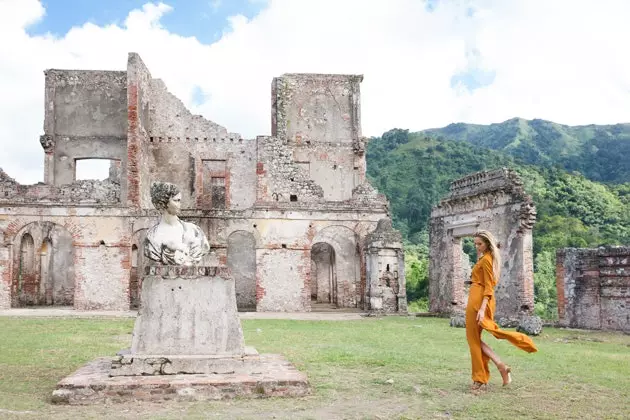
Remains of the Sans Souci Palace
In addition to the best guide in the area, Maurice is an architect, musician, and in love with the heritage left by his ancestors. "In our music we use percussion and a saxophone: six drums for our African culture, and a saxophone to show that we appreciate what the French left us." Maurice has been working for years on what will soon be a Cultural Center, Lakou Lakay, for which he is collecting dances, songs, old recipes, sayings... The center will have a hotel and a restaurant with views. He assures me that his wife prepares the best coffee one can imagine. “Tears come to my eyes when I look at the forest”, laments Maurice while we wait for the highly publicized coffee. Reforesting the country is one of the biggest challenges facing Haiti. The preparation of the land for a massive aerial seeding has already begun, as well as the environmental education programs. Recovering mahogany forests is as important as sensitize the citizens of the Haiti of the future.
The Sans Souci Palace and the Citadelle, a World Heritage Site, are about 45 minutes from the beaches of Cap Haitien and Labadee© , somewhat less when the road is finished. So, copyrighted, It is the private beach of the Royal Caribbean shipping company . Here 600,000 cruise passengers disembarked last year, double the number of foreign visitors who entered on international flights. Until now, most choose to stay under the coconut trees, taking advantage of the infinite options of this safe and controlled paradise.
If Haiti wasn't Haiti, tourists would flock under the tree of justice to hear the stories of King Christophe. But Haiti is Haiti, a country where two plus two does not always equal four, and indeed, this delicious coffee does not need sugar.
- This article is published in the Condé Nast Traveler magazine for February, number 70. This number _ is available in its digital version for iPad in the iTunes AppStore, and in the digital version for PC, Mac, Smartphone and iPad in the newsstand Zinio virtual (on Smartphone devices: Android, PC/Mac, Win8, WebOS, Rim, iPad) ._
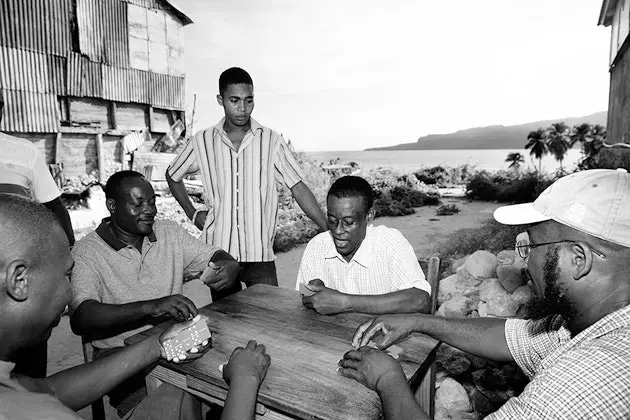
A normal day in Jacmel
